The Samsung Galaxy S6 and S6 edge Review
by Joshua Ho on April 17, 2015 9:00 AM EST- Posted in
- Smartphones
- Samsung
- Mobile
- Galaxy S6
- Galaxy S6 Edge
Display
As we briefly discussed in our look at the specifications, the Galaxy S6 line introduces a newer generation of AMOLED displays, which is said to increase maximum luminance to 600 nits. Samsung claims that this was achieved with the use of new materials, which is likely necessary in order to sustain power efficiency improvements. It doesn't seem that AMOLED is uniquely suited to high resolution, but rather that Samsung Display Corp. is managing to dramatically improve how they make AMOLED displays with every year that offset power consumption increases from higher resolution displays.
To find out how Samsung did, we use SpectraCal's CalMAN 5 Ultimate, in addition to X-Rite's i1Pro2 Basic to characterize displays as accurately as possible.
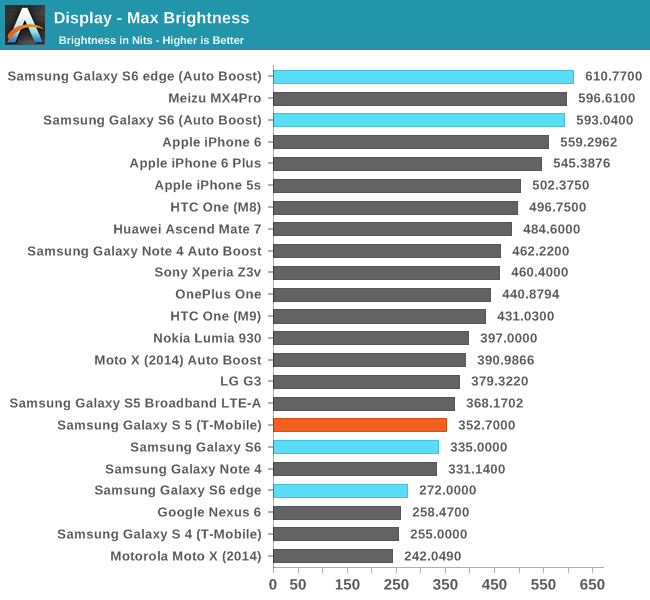
From the results Samsung's claims of a 600 nit display are valid in this case, which is a 100% APL white display. It's important to note that achieving this requires the use of auto-brightness, and that manual brightness is limited to a much lower brightness to reduce power usage, here the S6 sees similar maximum brightness as the S5. The S6 edge disappointingly only achieves 272 nits in this mode, a rather low value. I saw color balance shift dramatically in auto-boost mode, which suggests that this operating mode is likely less efficient than manual brightness. As an explanation, we've seen that colors are controlled in AMOLED by voltage while brightness is controlled by PWM (pulse width modulation). As with most recent AMOLED displays, there's no DC bias to the pixels so the contrast really is infinite instead of just a very large number when displaying black.
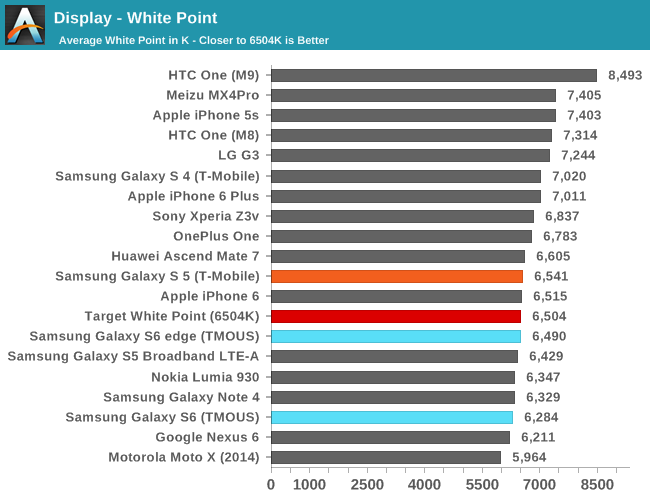

Moving on to grayscale, we can see that Samsung has done a pretty good job of controlling the white point and gamma across the saturation sweep, even if green is slightly dominant in both displays. We can also see that there is variation across displays as the S6 edge is closer to neutral while the S6 sample tends a bit warmer.
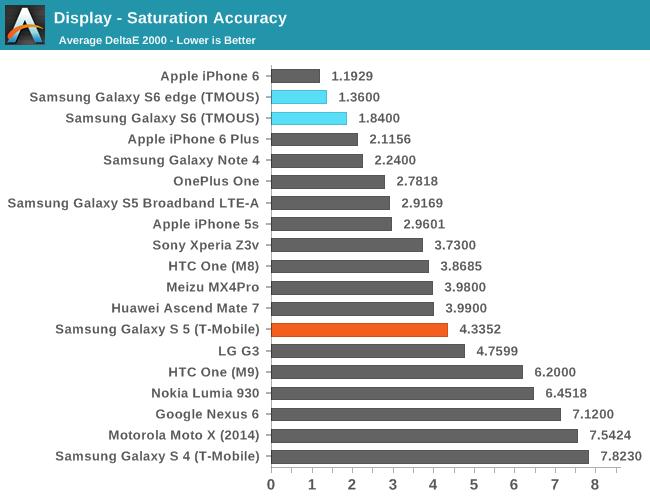
In the saturation sweep, both displays do an incredible job. I really don't have anything else to say here, because there's really no way to improve on the level of calibration Samsung has done on this display. Unless Samsung calibrates every single display in production, which is wildly impractical and effectively impossible to do, this is as good as it gets for a mass-produced device. Improving past this point will also be incredibly difficult to perceive, which means there's no real reason to go any further.
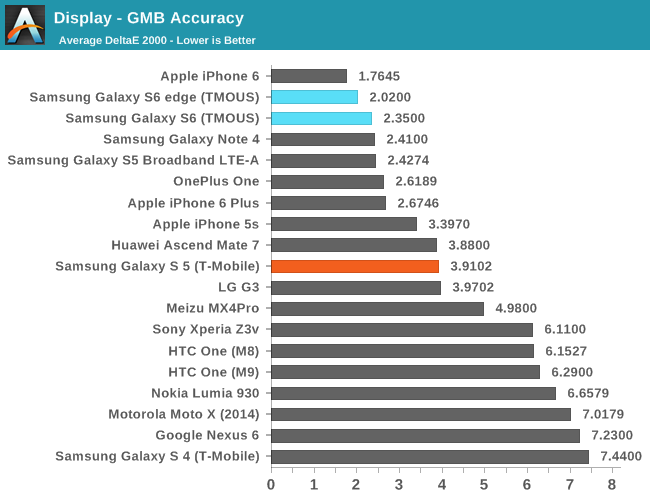
In the Gretag MacBeth ColorChecker, we can get an idea for overall color accuracy, which paints a picture similar to the saturation test. The only real problem I've noticed with these displays are the viewing angles, which can produce color shifting when the display is tilted. This is a bit of an issue on the edge variant as I can see that the edges of the display appear somewhat green when viewed head on, but otherwise there are no real issues to be seen here.
Overall, from a color standpoint it’s looking like Samsung has made one of the best displays available on the market today. Color accuracy is at the point where it’s pretty safe to say that the calibration doesn’t have clear color errors, and the peak brightness of the display is incredibly high. The 1440p resolution helps to compensate for the PenTile subpixel layout so in practice it’s effectively impossible to make out any pixels or the subpixel pattern. The contrast remains infinite as with most modern AMOLED displays, and overall it’s really hard to find any issue with the Galaxy S6’s display at first.
However while the S6 edge seems to be without any issues, the S6 does have some odd display issues that can be seen in direct sunlight as seen in the photo above. To be clear about this the photo above is a simple white screen, which should make the image completely homogeneous but instead there are two visible vertical lines and another jagged horizontal line that appear across the display. Inspection under a light microscope doesn’t really reveal what’s causing this, but the defect is quite visible in practice as seen in the photo above. I suspect that defects are rare, and in any condition other than direct sunlight I can’t see this visual problem.
While trying to see what this kind of defect looked like under a microscope, I also went ahead and took some photos of the subpixel pattern. As far as I can tell, it looks like the green subpixels have a bit more variance than what we’re used to as they tend towards oblong shapes rather than circles, which is likely due to the much tighter pixel density. It seems that this variance may cause some color shifting in certain units, which seems to remain a potential problem with Samsung's AMOLED displays. The pixel fill factor still remains surprisingly low when compared to LCDs, which usually have much higher active area. Due to the subpixel arrangement and some other differences in the display design, color shifting also remains higher than one would expect from LCD displays that are found in phones like the iPhone 6.
The final test that I managed to run on the Galaxy S6 is the brightness vs APL test, which shows the advantage of AMOLED’s emissive nature as it can dynamically increase brightness if the entire display isn’t showing a white screen. As a result, this means that in low APL scenarios like dark movie scenes and app themes it’s possible to see a maximum brightness closer to 700 nits or higher. However, in practice the display’s practical brightness is closer to 600 nits.
Overall, the display is still one of the best on the market, but I would be a bit concerned about fill factor for VR applications as that was a problem on the Note 4. Issues like purple smearing have been resolved, but there are still some problems with the display such as color shifting with changes to viewing angles and some variability in display quality from unit to unit. With this generation I suspect Samsung is either meeting or exceeding the best LCDs in quality, and with the next generation of AMOLED it’s likely that high end smartphones will have to migrate to AMOLED to remain competitive.



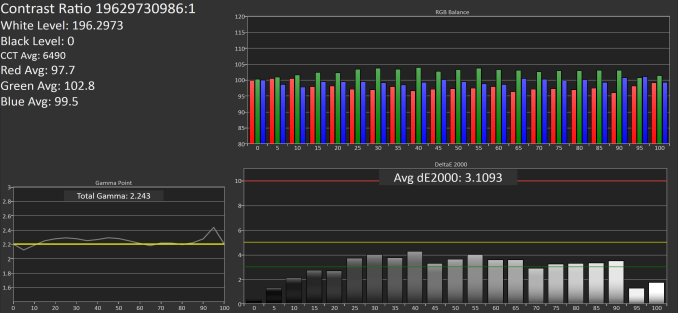
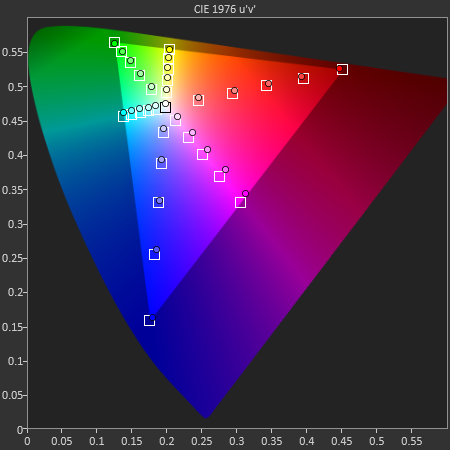
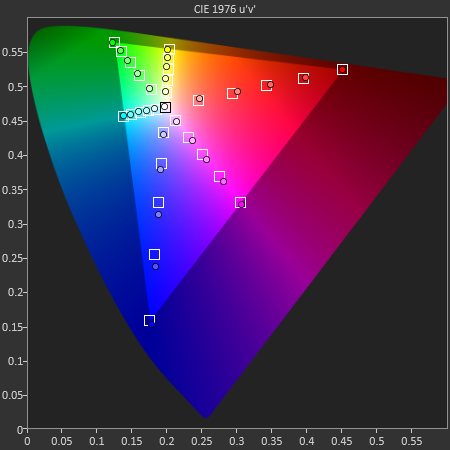
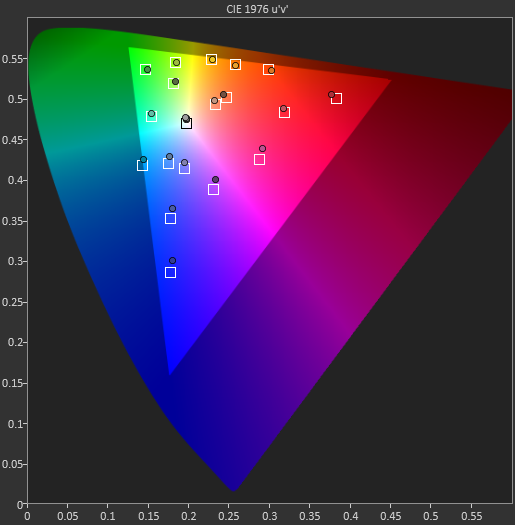

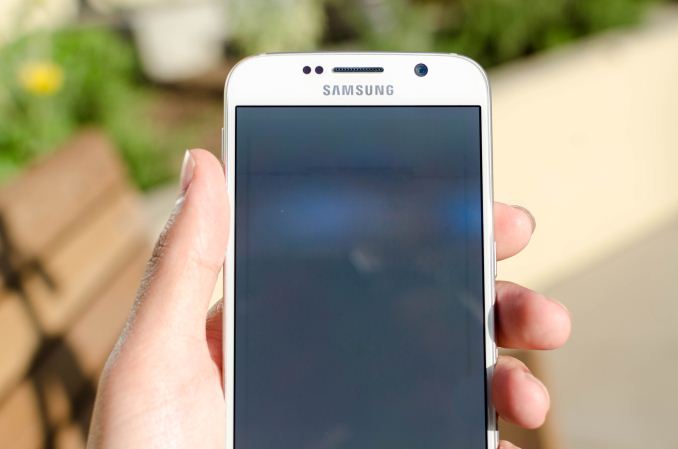
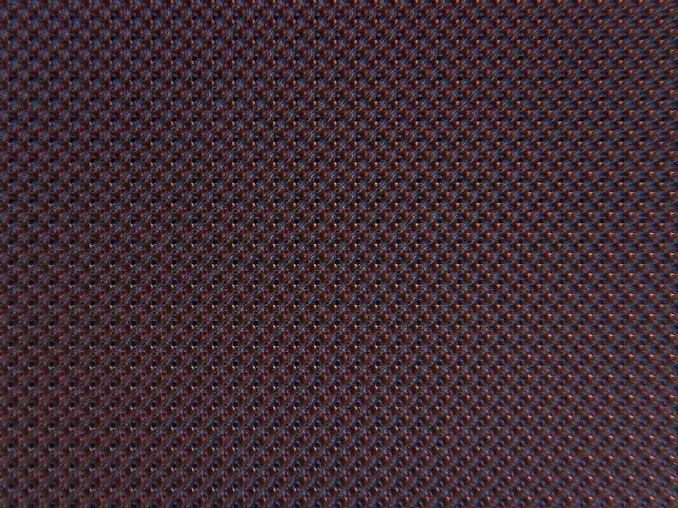
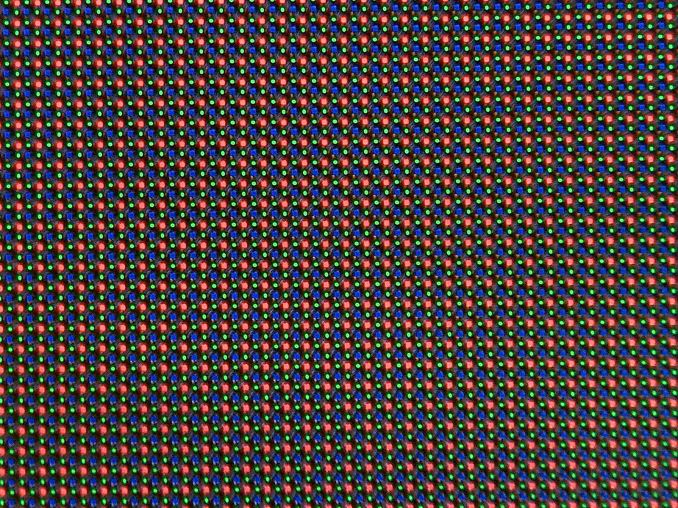
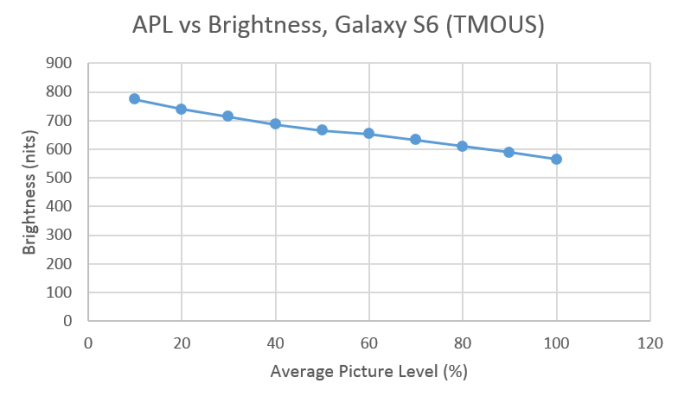








306 Comments
View All Comments
FlushedBubblyJock - Friday, April 24, 2015 - link
who are you kidding, yourselves ?YEARS AGO our big gov sucked all your data, and has been ever since
retroactive and completely illegal pardons were then issued
Frankly I'd rather he laws and the reality be that the idiot criminal government never be able to get anything, and the fact that they are sucking down everything all the time means I can't wait for it to stop
It's a principle, not a crime, sheep
They have no right to anything, EVER, that's what law abiding citizens DEMAND.
yvn - Friday, April 17, 2015 - link
I compared the edge to my iPhone 6 plus display and find still the display of the edge is still too saturated even in basic mode, how so...according to the benchmarks the display should be as good as the 6 plus but it was not, the color accuracy is still not as accurate??FlamingDragon810 - Friday, April 17, 2015 - link
Maybe because you're so used to the washed-out colors on your iPhone 6?The S6 has the most color-accurate display on the market. It's far better than the cheap IPS display on the iPhone 6.
yvn - Friday, April 17, 2015 - link
it is not true, my iPhone 6 plus display matches spot on with my calibrated iMac 27" screen via Spider 4 and Color Eyes Display Pro....so no Sir you are the one that is used to oversaturated colors on Samsung phones.....I am a full time photographer so I know a thing or two about accurate colorsFlamingDragon810 - Friday, April 17, 2015 - link
http://www.extremetech.com/mobile/200868-displayma...You're a full-time photographer who is used to washed-out colors from Apple.
Peichen - Saturday, April 18, 2015 - link
Ignore the troll. Both S6 and 6+ screen are accurate but S6 have lower white point than 6+. I am not sure about the color mode and adaptive color setting on the phone. I would suggest you wait for Erica Griffin's full review to come out on YouTube as she review color mode in detail. She only have hands-on review at the moment.generalako - Saturday, April 18, 2015 - link
You clearly don't know what the hell you are talking about. Read this review of the screen of the S6 by Displaymate (the only actual and legitimate display-tester out there): http://www.displaymate.com/Galaxy_S6_ShootOut_1.ht...The Galaxy S6 (like the Note 4) has by far the best display out there.
" The measured Absolute Color Error for the Galaxy S6 Basic Screen Mode is just 1.6 JNCD, tied with the Galaxy Note 4 as the most color accurate display that we have ever measured for a Smartphone or Tablet, which is visually indistinguishable from perfect, and is very likely considerably better than your living room TV or any display that you own.
assasinezio34 - Friday, April 17, 2015 - link
i have sold my s6 after 7 painful day.i really loved this phone.camera,screen exc..but battery life drove me crazy.returned to my iphone6 plus.Margalus - Friday, April 17, 2015 - link
I have never owned an apple product, and thought I never would. But after my experiences with the s4 and the android os things might be different next time. I still don't like apple and don't really want an iphone. I am a very light user, it's mostly for phone calls. What good is a phone that on it's best day will last about 16 hours. Then on other days with occasional bugs that cause the OS to go crazy and use the battery up in 4-5 hours with no usage..UrQuan3 - Friday, April 17, 2015 - link
Overall excellent review. I still really appreciate the screen color and gamut testing. It sets Anandtech apart. What equipment are you looking for to do audio testing? In my case, I am more interested in the headphone output than the speakers as I can't use the speakers in public anyway.